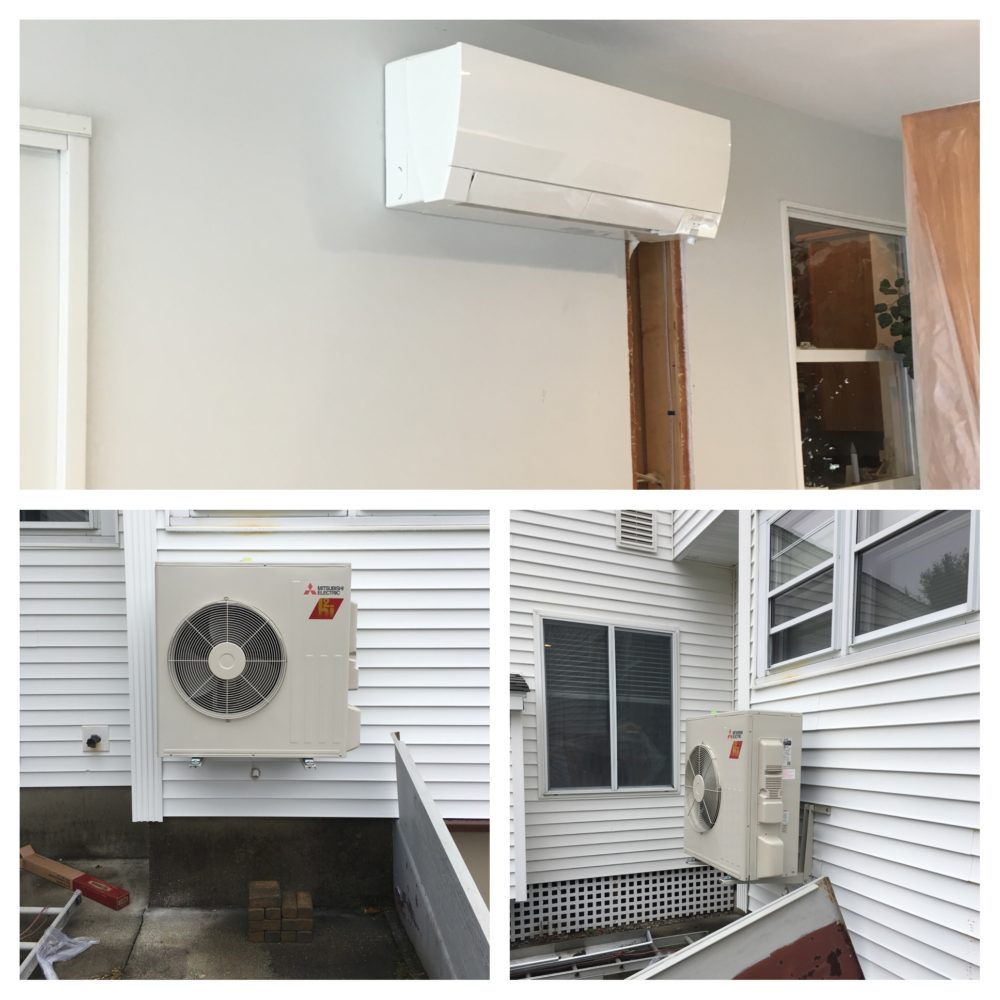Warranty and Insurance: Navigating AC Repairs and Coverage
Air Conditioning Installation for Historic Houses: Obstacles and Solutions ==========================================================================
Thinking about the complexities of cooling down ancient abodes, air conditioning installment for historical homes postures strange predicaments.
Just how can you maintain the honesty of duration homes while ensuring superior interior comfort?
Unravel the enigmatic interplay between modern air conditioning benefits and timeless building treasures in the adhering to discussion.
Trick Takeaways
- Preserve historical beauty with appropriate materials and expert assistance.
- Upgrade electric systems for contemporary HVAC compatibility and safety and security.
- Explore compact air conditioning options like mini-split or high-velocity systems.
- Enhance energy effectiveness via insulation, clever thermostats, and upkeep.
Historical Considerations
When taking into consideration the setup of cooling in a historic home, it's important to understand the distinct historical facets of the property. Restoration challenges often occur when trying to mix modern convenience with maintaining the historical honesty of the home. The architectural impact of setting up cooling need to be carefully examined to make sure that the system does not interfere with the home's initial design.
Maintaining the historical appeal of a home while updating its amenities can be a delicate balance. Remediation obstacles may include finding ways to conceal ductwork, locating discreet areas for the exterior system, or adjusting the system to fit within the existing building restraints. It's important to collaborate with professionals experienced in historic home restorations to browse these obstacles successfully.
The architectural effect of adding air conditioning can be significant. Careful consideration has to be provided to exactly how vents, thermostats, and various other aspects will certainly mix with the home's aesthetic. Seeing to it that the installation does not endanger the historic stability of the home is paramount when taking on such a project in a historical home.
Evaluating Electrical Equipments
To ensure a successful installation of cooling in a historical home, evaluating the compatibility and ability of the existing electric systems is necessary. Before proceeding with the installment, it is necessary to assess whether the electrical system can take care of the extra tons that the a/c unit will certainly present. Sometimes, updating the voltage of the electric system might be essential to make certain it can power the brand-new air conditioning system efficiently.
System compatibility is an additional vital element to examine when evaluating the electric configuration of a historic home. Older electrical systems may not be compatible with modern-day air conditioning devices, which can lead to breakdowns or even present security dangers. Making sure that the electrical system is compatible with the brand-new a/c tools will certainly help avoid any type of potential issues down the line.
Area Restraints and Ductwork Options
When dealing with minimal area in your historic home, you could want to discover ductless mini-split systems or high-velocity cooling and heating systems as viable alternatives. These systems can provide effective cooling without the need for extensive ductwork, making them ideal for older buildings with area restraints.
Ductless Mini-Split Systems
Thinking about area restrictions and numerous ductwork options, ductless mini-split systems supply a versatile remedy for a/c installment in historic homes. These systems supply considerable energy savings compared to traditional cooling and heating setups, as they allow for zoning, meaning you can cool down specific locations only when needed.
The layout flexibility of ductless mini-split systems is additionally advantageous for historical homes, where maintaining the initial aesthetic appeals is important. Without any ductwork required, setup is less invasive, making it a preferred choice for older homes with minimal area or where preserving architectural integrity is a concern.
Ductless mini-split systems are reliable, customizable, and blend effortlessly into historic interiors, providing a practical and energy-efficient cooling service.
High-Velocity Heating And Cooling Solutions
High-Velocity HVAC systems provide a compact and reliable air conditioning option for historic homes with restricted area and particular ductwork demands. High-efficiency AC models When taking into consideration these systems for your historical home, below are 4 key points to remember:
Mini air duct systems: High-Velocity cooling and heating systems use tiny air ducts that are much smaller sized in diameter contrasted to typical ductwork, making them excellent for homes with space restrictions.
Compact layout: The portable style of these systems permits easier installation in older homes where room is limited.
Efficient air conditioning: Regardless of their tiny dimension, high-velocity systems are capable of offering reliable cooling throughout your historical home.
Versatile installment: These systems provide various ductwork alternatives, such as adaptable tubes, which can be directed with existing wall surfaces without major improvements.
Power Efficiency Solutions
To enhance the power effectiveness of your historical home, consider upgrading the insulation and integrating a clever thermostat. These solutions can aid control indoor temperature levels effectively and lower energy intake, making certain an extra sustainable and economical cooling system for your one-of-a-kind home.
Make these upgrades component of your a/c setup strategy to maximize convenience while decreasing ecological influence.
Insulation Upgrades
Upgrading the insulation in your historic home can greatly boost its power efficiency and general convenience while maintaining its special character and appeal. Take into consideration these vital methods for insulation upgrades:
Evaluate Home Window Treatments: Setting up energy-efficient window treatments like shielded curtains or blinds can aid minimize warm transfer and boost the overall performance of your home.
Enhance Roofing System Insulation: Updating roof insulation is necessary for far better temperature regulation within your historical home, helping to keep it cool in the summer season and cozy in the winter.
Seal Gaps and Cracks: Recognizing and securing spaces and fractures in your house's wall surfaces, floors, and ceilings can protect against air leakage and improve insulation efficiency.
Take Into Consideration Attic Insulation: Properly protecting your attic room can considerably lower warm loss and boost the general energy performance of your home.
Smart Thermostat Assimilation
Taking into consideration the energy-saving advantages of insulation upgrades in your historic home, incorporating a wise thermostat can better enhance your power effectiveness remedies.
Smart thermostats provide precise control over your home's temperature level settings, resulting in significant power financial savings. By enhancing heating and cooling timetables based on your choices and daily regimens, you can lower energy waste and reduced energy expenses.
In addition, wise thermostats provide remote gain access to, permitting you to readjust the temperature level setups from anywhere utilizing your smart device or computer system. This attribute enables you to ensure your home is efficiently heated up or cooled even when you're away, making the most of comfort while decreasing energy intake.
Accepting smart thermostat technology is a practical step in the direction of improving the power effectiveness of your historical home.
Conservation Strategies for Air Vents
Protecting the stability of historic air vents is essential throughout the installation of cooling systems in older homes. Ductless AC repair When it concerns keeping the building credibility of your historical residential or commercial property while updating its convenience, take into consideration the following preservation techniques for air vents:
Remediation Techniques: Carry out cautious reconstruction techniques to preserve the initial layout and material of the air vents, guaranteeing they blend seamlessly with the historical visual appeals of your home.
Get in touch with Specialists: Consult from professionals experienced in historic conservation to lead you on the most effective techniques for preserving the air vents' architectural honesty.
Custom-made Solutions: Check out custom-made services that deal with the special attributes of your historical air vents, enabling contemporary upgrades without compromising their original appeal.
Period-Appropriate Materials: Go with period-appropriate products when repairing or changing air vents, guaranteeing they line up with the historic period of your home's style.
Professional Tips for Effective Setup
When mounting air conditioning in historic homes, making certain effective setup requires adhering to professional pointers for a smooth assimilation with your home's unique features.

Start by very carefully reviewing warranty insurance coverage provided by various HVAC business to protect your financial investment in instance of breakdowns. Get all necessary authorization demands from regional authorities before beginning any installation job to prevent lawful concerns down the line.
Budget preparation is necessary; make certain to represent any kind of unpredicted expenditures that might emerge during the installment procedure. Furthermore, develop upkeep routines from the beginning to maintain your new system running efficiently for several years to come.
Frequently Asked Questions
Can Air Conditioning Be Installed in a Historic Home Without Compromising Its Historic Honesty?
Yes, you can mount a/c in a historic home without endangering its historic integrity. Preservation methods can be used to flawlessly integrate modern cooling systems while maintaining the home's original beauty.
By tactically putting ductwork and units concealed, you can assure that the historical attributes continue to be famous.

It's feasible to enjoy the conveniences of cooling in a historical home without sacrificing its unique character.
Are There Unique Factors To Consider to Bear In Mind When Installing A/c in a Historic Home With Outdated Electric Systems?
When updating electrical wiring in a historical home with outdated electrical systems, unique considerations are vital. Conservation techniques need to be used to preserve the historical integrity of the residential or commercial property.
It is necessary to work with experts that understand the fragile balance in between modern-day conveniences and preserving the home's distinct personality.
Exactly How Can Ductwork Be Discreetly Installed in a Historic Home With Limited Space?
When handling minimal space in a historic home, you'll need to contemplate discreet style and space-saving remedies for mounting ductwork. To preserve historical preservation while enjoying contemporary benefit, explore creative ways to tuck ducts away without endangering the home's looks.
Explore slim air duct alternatives or contemplate utilizing existing tooth cavities for duct positioning. By mixing capability with nuance, you can ensure a smooth assimilation of a/c in your historical home.
What Are Some Energy-Efficient Options for A/c in Historic Residences?
When seeking energy-efficient options for a/c in historical homes, think about making use of energy-efficient zoning and mini split systems. Energy-efficient zoning helps manage temperatures in various areas of your home, preserving power.
Mini split systems are a wonderful choice for older homes with restricted room, supplying both cooling down and heating features. By opting for these options, you can maintain your historical home comfy without compromising on energy performance.
Are There Particular Conservation Strategies That Should Be Used for Historic Air Vents During Installment?
When setting up a/c in historic homes, conservation strategies play a critical role. It is very important to ensure that the existing air vents are very carefully incorporated right into the new system to preserve the historical aesthetic of the home.
Conclusion
When installing air conditioning in historical homes, it is necessary to contemplate the unique obstacles such as protecting the home's historical honesty, examining electrical systems, and functioning within area constraints.
By thoroughly intending and making use of energy-efficient options, you can effectively mount cooling without jeopardizing the character of your historical home.
Keep in mind to seek advice from specialists for assistance and assurance proper preservation techniques for air vents to preserve the appeal and performance of your home.